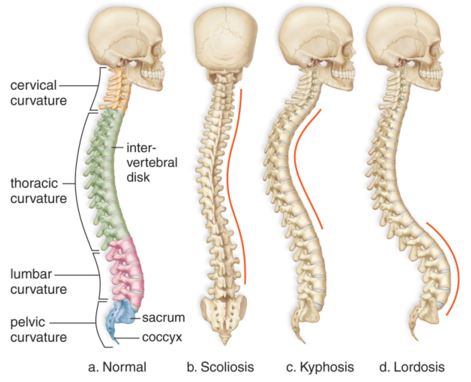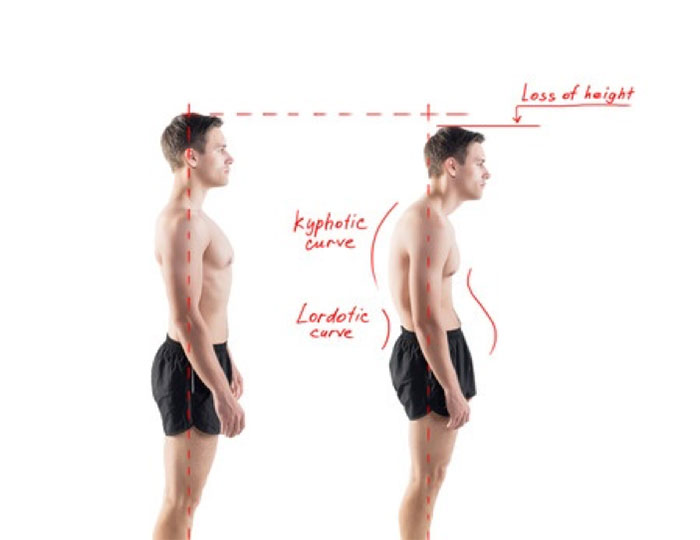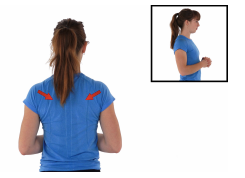Did you know that back pain is the leading cause of disability worldwide? Not only does this act to decrease your quality of life, but also becomes an impediment to productivity and happiness in the workplace. Practicing good posture is a great way to proactively protect yourself from the prospect of back pain and its debilitating effects.
If you’re sitting with ‘good posture’, you look strong and healthy while also preventing pain and injury. So, what is posture and why is it important? This is where things get a little more complicated because posture is a dynamic concept; meaning that it is always changing as we do different things. If you’d like to know more about ‘good posture’ as you sit in the workplace and how you can easily correct your own throughout the day, please read on!

Let’s begin with discussing the spine; the foundation of your body structure and support. It is comprised of 33 bones, stacked like building blocks, which are responsible for allowing you to stand upright, twist, and bend while ensuring that your spinal column and nerves are protected. The normal spine forms an S-shaped like curve when viewed from the side and can be divided into 3 main segments: the cervical spine (neck), the thoracic spine (mid back) and the lumbar spine (low back).
What does faulty posture look like?

Faulty posture is virtually any position that increases stress on your joints. Faulty posture can lead to spinal conditions, degeneration, decreased flexibility and muscle imbalance, among other conditions. Common faulty posture can include: chin poke forward, shoulders hiked or rounded forward, or kyphosis (excessive curvature of thoracic spine).
What is correct posture?
As you can probably guess, correct posture is the position in which there is the least stress to all joints, supporting muscles and ligaments. Correct posture requires 4 key skills:
- Strength
- Flexibility
- Mobility
- Awareness
If you are currently sitting down at a desk and reading this, ensure your monitor is at eye level, try sitting with your upper back straight and your shoulders relaxed. Your arms should be relaxed at your side with your upper and lower arm forming a 90-degree angle and a neutral wrist position. Ensure that your lower back has support, that your hips are as far back in your chair as possible, and that your feet are flat on the ground or resting on a footrest.

3 Quick tips to improving your posture:
1) Take breaks
No matter your position, remember to take micro breaks every 30 minutes. Alternating your position regularly can help to prevent muscle fatigue and stiffness.
TIP:If using a standing desk, think about pulling your belly button towards the back of your spine and tuck your hips under and occasionally stand on with one foot on a stool to reduce pressure and strain on your back.
2) Try this simple stretch for your upper trapezius muscle:

- Lift one arm and bring it up and across your head.
- Sit straight and place the palm of your hand on your head.
- Use your hand to pull your head gently down towards your shoulder until a stretch is felt on the opposite side of the neck.
- Maintain the position for 30 seconds before switching to the other side.
- Do not turn your head or tilt it forward or backwards while you perform this stretch.
3) Scapular/ shoulder blade setting exercise:

- Sit tall without back supported, feet firmly planted and equal weight on each ‘sit’ bone.
- Gently squeeze your shoulder blades back and down towards your spine. Hold for a count of 10 seconds, and then release. Repeat 4 to 5 times daily.
Practicing better posture at work is about more than getting the most out of your day at the office, it’s about maximizing the potential of your body and its ability to support you. While teaching every one of posture’s intricacies might be impossible, providing a few simple tips for improvement certainly isn’t.Make your body work for YOU with the help of the advice given here and remember – Motion is Lotion!
References:
1. Loranger, L (2018). The Importance of Posture. Physiotherapy Alberta College + Association. www.physiotherapyalberta.ca. Accessed on November 4, 2018.d
2. Hoy, D., March, L., Brooks, P., Blyth, F., Woolf, A., Bain, C., … & Murray, C. (2014). The global burden of low back pain: estimates from the Global Burden of Disease 2010 study. Annals of the rheumatic diseases, 73(6), 968-974.
3. Wilkes, C., Kydd, R., Sagar, M., & Broadbent, E. (2017). Upright posture improves
affect and fatigue in people with depressive symptoms. Journal of behavior therapy and experimental psychiatry, 54, 143-149.4. Workers’ Compensation
Board Alberta. Back to Basics: A guide to good back health. 2008. Available at: http://backactive.ca/ Accessed on November 4, 2018.5. Workers’ Compensation
Board Alberta. Office Ergonomics: Think detection.Think prevention. Think activity. 2007. Available at: https://www.wcb.ab.ca/. Accessed on November 4, 2018.





